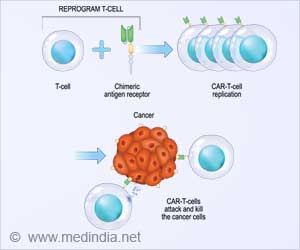A structure-based drug design strategy will help in improving treatment against hormone-driven breast cancers.

- The current treatment for hormone-driven breast cancer is not the best way to block the estrogen receptor.
- Resistance to these therapies have also emerged.
- X-ray crystallography helps to understand the shape of the receptor protein of cancer cells.
- It also helps to visualize the drug candidate as it binds to the receptor protein.
The new study by scientists from the Florida campus of The Scripps Research Institute (TSRI) show that the current approach is not the only, or even the best way, to block the estrogen receptor.
"We have created a different approach that gives us a mechanism to produce new types of therapeutic molecules," said TSRI Associate Professor Kendall Nettles. "There are a lot of ways to avoid resistance and other cancer risks, and this gives us a tool box full of alternative approaches that could limit or eliminate those effects."
"With the standard method, no one understands the structural basis," he continued.
By the shape of the receptor protein and see how the drug works on it, it makes the development process much faster.
The current method of creating this class of drugs, which includes tamoxifen, involves attaching a bulky cluster of atoms with a chainlike structure to molecules that disrupt the estrogen receptor binding site.
This image is used to guide the production of estrogen receptor degraders that also lack the side chain, helping to reduce the risk of resistance and the development of other cancers.
"Our structure-trapping approach to X-ray crystallography provides a molecular snapshot of how subtle changes to a compound series generate a range of graded activity profiles," said Research Associate Jerome C. Nwachukwu, who was co-first author with Research Associate Sathish Srinivasan.
The new method also makes it possible to identify structural rules for how the molecules interact.
"This is the first example of a structure-based design strategy targeting the estrogen receptor where there is a clear correlation between the chemistry, crystal structure and activity, which is another big advance that will be of broad interest to the cancer community," Srinivasan said. "We show that indirect antagonism can result in inhibition of proliferation in a predictive fashion."
This structurally distinct mechanism, acting indirectly rather than involvement of the typical side chain, provides a new way to design biologically distinct molecules for breast cancer prevention and treatment.
Source-Medindia















